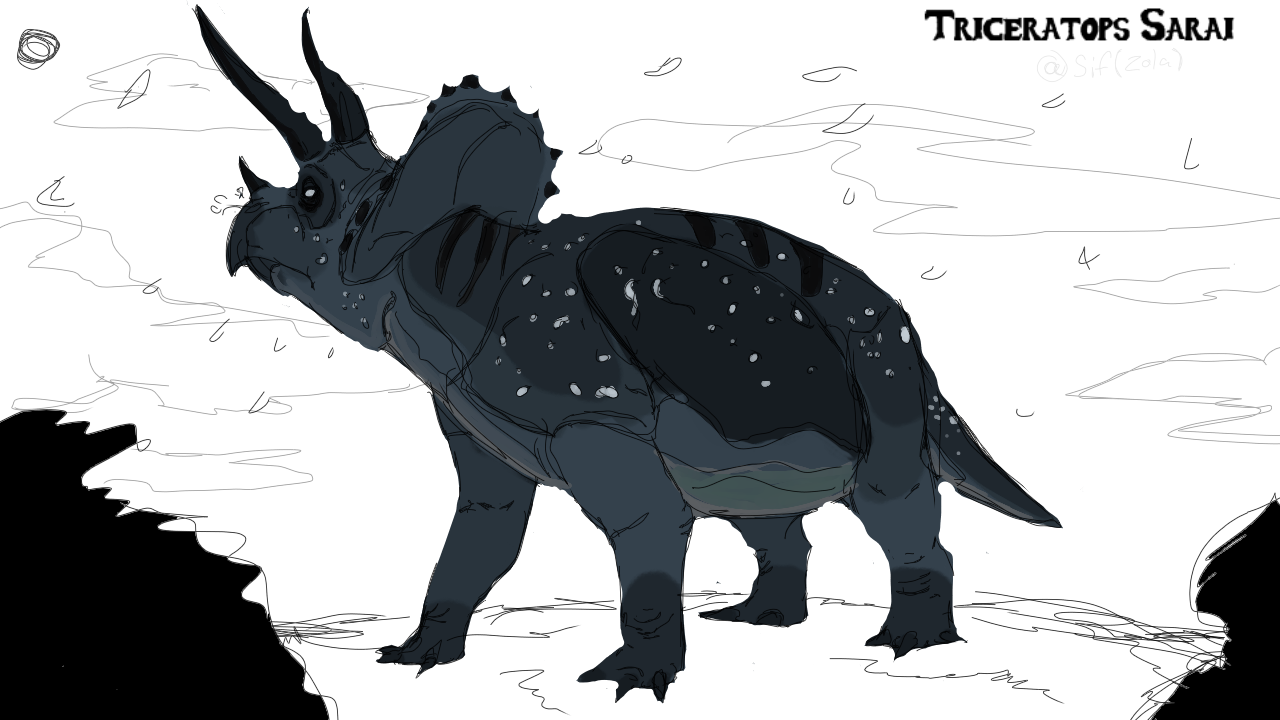Species Triceratops SaraiOriginal sample genome: t. Prorsus | |
| |
Identifier: TRIC-YY-#### |
herbivore |
Family Ceratopsidae |
Suborder Chasmosaurinae |
The gene sequence and first successful breeding of this species took place at Maple White Facility (Complex A - Retired) |
|
26′ (8m) Long, 9.5′ (2.9m) Tall |
21,000 lbs |
Measured Speed: |
|
Terrain Preference Is Primarily Grassland |
|
Preference of Diet Is Roots/Scrub/Bark |
|
Unarguably the most famous herbivore species of all time, Triceratops, or “Trikes,” are named for the three horns on their head (the name literally meaning “three horned face”). This generally peaceful grazing species travel the island in family groups, using their blunt but sharp beaks to pull up roots and bushes and ‘chew’ bark off of young growth. The large boney frill used in identification and mating displays leaves their skulls massive, often as much as 1/4 of the entire body length.
Trikes are extremely docile despite their looks, and will only attack if they feel threatened. They are limited in movement, having a short tail and neck, but if they can move a predator directly above their head, an upward thrust can impale or even disembowel a tyrannosaur (Known based on one incident in Brazil).
Aside from pigmentation and health related testing, there have been a number of trials attempting to miniaturize triceratops for future marketing as an exotic pet. This however has not succeeded in producing any surviving embryos.

